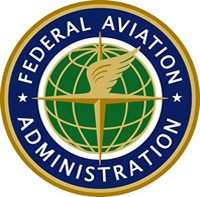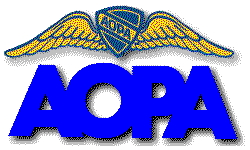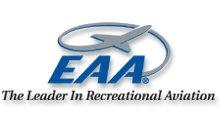AOPA, NATA, EAA Concerned With Impact On Charity Flights, Tour
Operators
 The FAA's final rule on air
tour operations, released Thursday, has so far
drawn measured responses from the aviation
community. Representatives with the Aircraft Owners and
Pilots Association (AOPA), the National Air Transport Association
(NATA), and the Experimental Aircraft Association (EAA) tell
ANN the impact the rule will have on Part 91 operations is as
minimal as could be hoped for... but may still be detrimental
to pilots flying for charity fundraisers.
The FAA's final rule on air
tour operations, released Thursday, has so far
drawn measured responses from the aviation
community. Representatives with the Aircraft Owners and
Pilots Association (AOPA), the National Air Transport Association
(NATA), and the Experimental Aircraft Association (EAA) tell
ANN the impact the rule will have on Part 91 operations is as
minimal as could be hoped for... but may still be detrimental
to pilots flying for charity fundraisers.
"The FAA has agreed with AOPA’s contention that small air
tour operators who stay within 25 statute miles of their departure
point should be able to continue to fly under Part 91 instead of
being forced to operate under much more expensive Part 135
regulations," said Luis Gutierrez, AOPA director of regulatory and
certification policy. "That decision is likely to be the difference
between literally hundreds of small sightseeing operations across
the country staying in business or going under."
AOPA points out the biggest change for Part 91 sightseeing
operators will be that they now have to get a letter of
authorization from the FAA.
There are also some new safety requirements... but for most
fixed wing operators, they should not prove to be a major financial
burden.
Pilots and associated organizations using charity sightseeing
flights to raise money, however, will not be pleased. The new rule
more than doubles the required minimum flight time for private
pilots to conduct these flights.
 "Despite AOPA’s
arguments, the FAA raised the minimum experience level for private
pilots from 200 to 500 hours," Gutierrez said. "The FAA based their
action on the fact that more accidents occur with pilots between
200 and 500 hours. But because the majority of pilots fall into
that range, the statistics used by the FAA to justify the change
may not reflect the true safety record of pilots in this experience
level, but rather their increased exposure."
"Despite AOPA’s
arguments, the FAA raised the minimum experience level for private
pilots from 200 to 500 hours," Gutierrez said. "The FAA based their
action on the fact that more accidents occur with pilots between
200 and 500 hours. But because the majority of pilots fall into
that range, the statistics used by the FAA to justify the change
may not reflect the true safety record of pilots in this experience
level, but rather their increased exposure."
"This move unnecessarily reduces the number of pilots available
to give charity sightseeing flights by 22 percent," Gutierrez
adds.
The NATA agrees its initial review of the final rules shows the
FAA appears to have acknowledged many of the concerns voiced over
its initial rulemaking proposal.
"We are pleased that the final rule protects the long-standing
tradition of permitting local sightseeing flights by private
operators. Elimination of this provision would have devastated many
small businesses and deprived the public of the all-too-rare
opportunity to experience flight in a small general aviation
aircraft," said NATA President James K. Coyne.
For those conducting commercial air tours, the FAA heeded calls
from many commenters that certain provisions of Part 136 were
unnecessary. Proposals to establish nationwide standoff distances,
minimum altitudes, cloud clearance and visibility requirements were
all removed from the final rule. Additionally, life preserver
requirements were revised and clarified.
 Requirements for floats on
helicopters remain; however, the provision was clarified to state
it applies only to helicopters used in operations where a portion
of the flight is over water, and then only when the helicopter
cannot reach shore in an emergency.
Requirements for floats on
helicopters remain; however, the provision was clarified to state
it applies only to helicopters used in operations where a portion
of the flight is over water, and then only when the helicopter
cannot reach shore in an emergency.
"Because the rules became available only [Thursday],
in-depth review is still on-going, but on the whole it would appear
that the FAA has accepted many of the changes recommended by
industry and has attempted to lessen the impact of these
regulations," Coyne noted. "While the agency’s efforts are
appreciated, we are still concerned about the cumulative impact of
the final rules, particularly for helicopter operators."
"The devil may yet be in the details," Coyne warned.
 The EAA is
pouring over each and every detail of the 107-page NPRM, and what
the new rules mean to charity flights, as well as commercial and
sightseeing air tour operations. The regulations will affect a
significant part of certain flying by EAA and many of its members
-- including the B-17 tour, Pioneer Airport operations, and
Young Eagles flights. Many EAAers also provide "barnstorming"
flights that will be affected by the new regulations.
The EAA is
pouring over each and every detail of the 107-page NPRM, and what
the new rules mean to charity flights, as well as commercial and
sightseeing air tour operations. The regulations will affect a
significant part of certain flying by EAA and many of its members
-- including the B-17 tour, Pioneer Airport operations, and
Young Eagles flights. Many EAAers also provide "barnstorming"
flights that will be affected by the new regulations.
"EAA members should realize that this rule has not yet been
published in the Federal Register (as of Friday, February 9), and
will not become effective until 30 days after publication," said
Earl Lawrence, EAA vice president of government and regulatory
affairs. "We will complete our analysis by early next week, then
determine the best course of action for our members and other
aviation enthusiasts."
In all, over 2,300 comments were received by the FAA following
publication of the original NPRM -- most of them opposing a
proposal that would have required full air carrier certification
for local sightseeing operations while imposing overly restrictive
requirements on all commercial air tour operators.
 Aero-FAQ: Dave Juwel's Aviation Marketing Stories -- ITBOA BNITBOB
Aero-FAQ: Dave Juwel's Aviation Marketing Stories -- ITBOA BNITBOB NTSB Prelim: Rutan Long-EZ
NTSB Prelim: Rutan Long-EZ ANN's Daily Aero-Term (12.05.25): Hazardous Weather Information
ANN's Daily Aero-Term (12.05.25): Hazardous Weather Information Aero-News: Quote of the Day (12.05.25)
Aero-News: Quote of the Day (12.05.25) Airborne-Flight Training 12.04.25: Ldg Fee Danger, Av Mental Health, PC-7 MKX
Airborne-Flight Training 12.04.25: Ldg Fee Danger, Av Mental Health, PC-7 MKX






